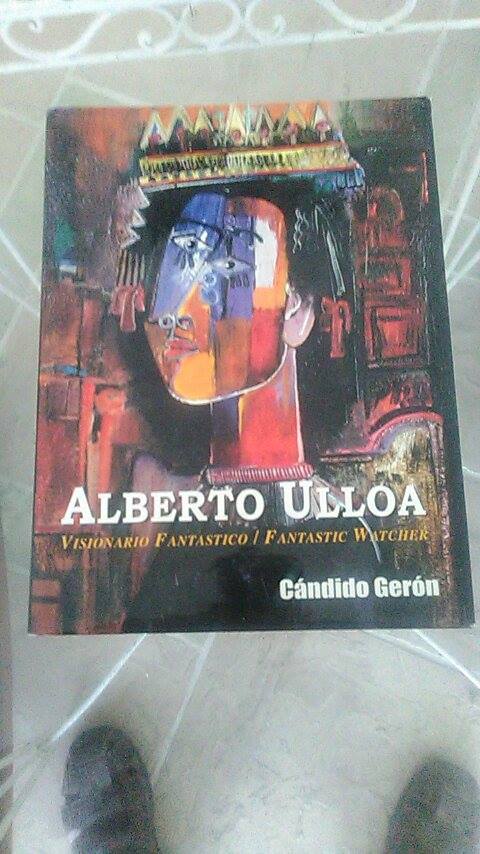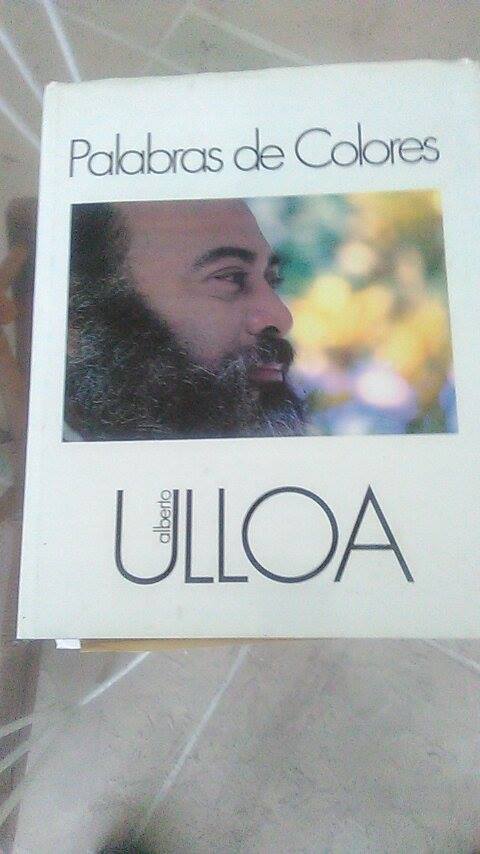ALBERTO ULLOA - ART IS A METAPHOR FOR LIFE
Cándido Gerón*His article, Art as a Metaphor of Life is a framework that dissects, analyzes and underscores the brilliance of El Maestro Alberto Ulloa.
Alberto Ulloa is an artist of exceptional creative sharpness. His works become an approach each time more intimate and deeper in the reality and the imaginary. It is faced with the Dionysian, with the labyrinths of the unattached, with transgressed spaces, configured for the myth, the fall, purgatory, the escape, paradise, the caves from where the silences and the deepest sentiments spring.
The world still represents for him a psychic revolution capable of expressing the most distant or the certain kind of poetry melted into the pictorial matter, an aspect that the spectator or the art critic can easily perceive. Certainly, his works have other more vital manifestations, as in case of the existential figuration, a lot more liberated, much fuller of expressive resources, and even a lot more authentic in its possibilities to reach new formal solutions.
It seems clear that Alberto Ulloa is a romantic by nature, a surrealist and a poet. This allows us, in a certain way to perceive, even if in between lines, that climate of artistic activity in which he affirms an experience that has its roots in myth and testimony; "able to perceive, in a particularly intense (even though this would only be inwardly) and sensitive life, the passions, the feelings, the concerns, the hardships and the glories of the men of his time, and capable of projecting this experience: that is, capable of expressing it."1
And seen things this way, his painting is not an idea but a fact. A fact that is constituted precisely by matter and without matter the artist doesn't achieve the construction of a language and a code of his own. The language is the reference to the surrounding reality. The code is the self expression of the creator, the crucial fact of confronting that reality with the artistic reflections, to the forms and color disposition have an aesthetic result that with the intervention of the spectator, helps decipher what art hides. In that aspect, Ulloa walks in the world in search of his essence.
His pictures endorse his excellence and the artist has reached a high degree of technical perfection that allows him great versatile representation, based mainly in the quality of his paintings, drawings, sculptures and ceramics. The principal merit of his artistic production resides in a conscientious critical thematic and in a well worked architecture of the picture, because Ulloa feels devotion for what he does, nothing is in excess in his creation; he keeps the gusto to observe and to live, and this permits him to think and formulate different queries involving reason, painting, drawing, sculpting and the making of ceramics. All this, without counting his literary works, poetry, stories and novels, forms a symbiosis of his pictorial production.
Certain analogy between both occupations. But the phenomenon is not so simple, since Alberto Ulloa creates parting from existential conflicts and not properly taking into account the object. In this case, he follows the interpretation of Paul Valery, when he affirms: "the entire mind's arbitrariness, as all the space's vacuum to be covered are attacked, invaded, and occupied by a need each time more and more precise and demanding." And he adds: "It is a marvel how little the soul needs the mind in order to give all it demands and so it commits all its reserved forces in the task of being itself, that it understands that it is not, so it differs so little of its more common state, it doesn't want to be reduced to being what it ordinarily is."2
As in the work of Paolo Gasparini, Ulloa "tries to invent himself again in what there is and even in what there is not."3 This way, the object and the artist are part of a single unified, integrated process. These are epiphanies, ghosts, since in the Dominican artist's works, life liberates itself of the banalities to open the way to the why and the how.
The work of the consecrated master of Dominican plastics, Alberto Ulloa, affirms notably, force effects, energy and density elements; he goes through a series of adaptations and basic premises of the pure and abstract expressionism, the Dadaism, the impressionism, the cubism and the surrealism. His work engenders the problematic of reality and imaginary and it is characterized for its double analytic and synthetic movement by means of which the artist reveals the essence of his creativeness.
His art not only has the energy of a laborious life but also the ingenuity of its more violent passions; of his original ideas, of the moments in all creations in which it turns to catharsis and all work is the expression of the different stages of his own life. This is a metamorphosis, of a wild obstinate where the artist so intends to exalt matter and the occupation with the finality of reaching the universal transcendence.
Ulloa is a hunter of challenges and ghosts; he mixes in his works the memory and the silences, voices and times and, in a plural emblematic bet, invents all the mysteries of life, the most radical guess revealing all the drama, the romanticism and the passionate artist's life. In the other side, his characters are based in a fraternity and he engenders his inventions parting from the discrepancies, from the paradox, from hate and love. They do this deliberately to destabilize the irony they seem to simulate, trying to recreate a space, scenery of dynamic structures, where the plastic discourse replaces all the feelings and the most incredible expressions so as to infiltrate all types of subjectivism.
Ulloa creates certain Epiphanies in many of his characters, if we observe carefully the way he works in a metamorphosis of the forms and his emblematic colors, a contrasting equation, of his phosphorescent, metallic tones and pastels, where prevail the vermilion red, the ultramarine blue, the yellows, the ochre, the grays, black and white; while he tries to assume the challenge of the composition in an unlimited desire of always exploring the limits of the pictorial matter and of properly creating an epic since in his creation he must always introduce the narrative aspect and also the poetic language.
In his characters, we can observe ruptures and tensions, an implicit pulsation, and the visual language is placed parting from a privileged universe, where the forms and the graphs stir up deliberate combats. His characters besiege us from diverse dimensions of the cosmos; from the Lascaux and Altamira caves until they touch the most controversial postmodernist pictorial masters. In Ulloa artwork is given the most tempestuous signs and his color universe is a true phosphorescent explosion. Under that influx, the surfaces of his pictures acquire a kind of trans-luminous appearance. Ulloa, as an artist is a romantic, the prototype of the magician of seducing forms and colors; he is a creator of myths, someone that recalls the paths with its up and downs. His painting possesses an imaginary where the freedom of dreaming is involved. The ideological is a mental thing in his pictures and is part of the artist's feelings that is shown in many of his drawings in relation to reality and the existential drama in his own life. This is about the incessant adventure in which he does not cease in thinking about the actions and the nightmares caused by all transcendental art. Due to this, his artwork proposes a Utopia in crisis.
Cándido Gerón is one of the most prolific writers of Dominican art history. A poet, journalist, art critic and diplomat, Gerón published two books on artist Alberto Ulloa. They are Alberto Ulloa: Visionario Fantástico and Alberto Ulloa: El Paraíso de Las Invenciones.
Among his other most important works are Anthology of Dominican Painting (1990); Masterpieces of Dominican Painting-1844-1995 (4 volumes); Jaime Colson (1996); Dominican Painting, a quarter of a century-1970-1996 and Dominican Painting-1890-2000. Most of these works have been translated into English and French.
Candido Geron --
Reknowned Dominican historian, writer and poet.
Author of Alberto Ulloa The Paradise of Invention .
Prologue: Art as a metaphor of the life. Candido Geron,
Editora Corripio CxA, Dominican Republic, 2006.
1 Art or no Art. "Art in the III Paris Biennial" Jorge A. Manrique, "Words and Man" Magazine University of Veracruz, Jan-Mar 1964, p.61.
2 "New and Old Theory of Art". Paul Valery. Mexico Art Encyclopaedia. National Institute of Fine Arts, Mexico, 1985, pp. 76-77.
3 Mexico "Notebook of Art", National Institute of Fine Arts, Mexico, 1985, p.4.




